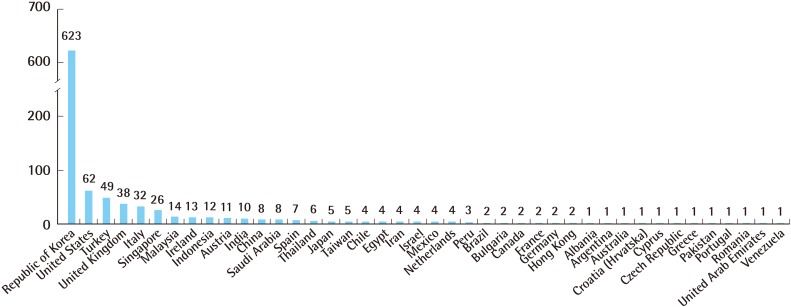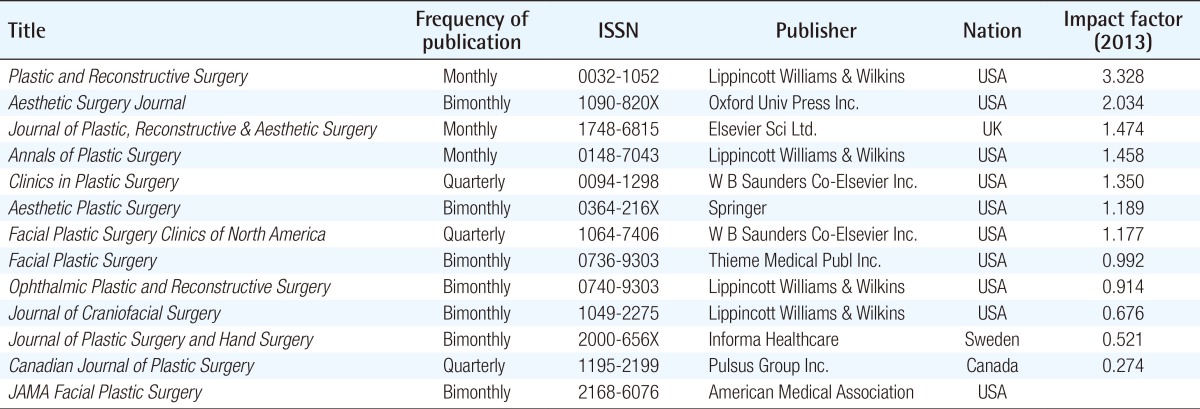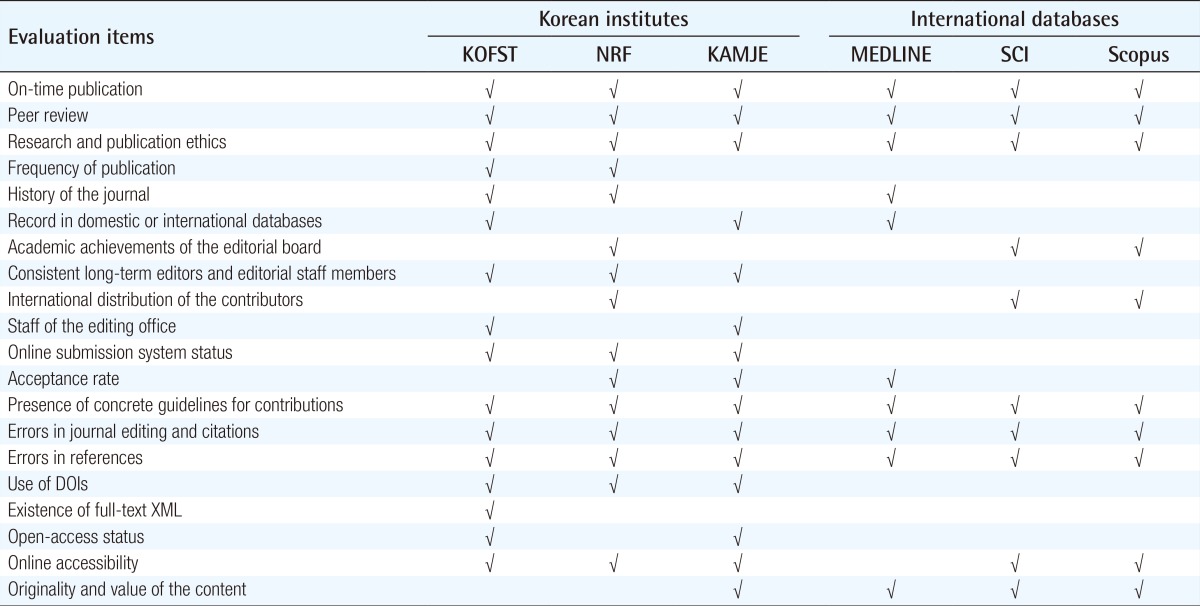The Current Position of Archives of Plastic Surgery and Its Future
Article information
The Korean Society of Plastic and Reconstructive Surgeons (KSPRS) was founded in 1966. With 2,112 members, it is the third largest society of its kind, following those of the United States and Brazil. Based on this institutional foundation, advances in surgical techniques have led Korean plastic surgery to a position of international prominence [1]. The publication output of Korean plastic surgeons over the last 10 years has shown a remarkable growth in terms of quantity and quality. Currently, Korea is among the top six countries in representative plastic surgery journals [2].
Archives of Plastic Surgery (Arch Plast Surg, APS) is the official journal of the KSPRS. It was first published as Journal of the Korean Society of Plastic and Reconstructive Surgeons in 1974, and its name was changed to Archives of Plastic Surgery with the institution of an English-only policy in 2012 [345]. Along with this transition, the journal was converted to open access, allowing readers to view or download the full text of all journal content without a subscription. In order to ensure the convenient online searchability of APS articles, the journal is indexed, tracked, and covered internationally by representative databases, such as PubMed, PubMed Central, CrossRef, Scopus, Embase, and Google Scholar. The rapid sharing of new knowledge is possible through these various distribution channels.
APS is a peer-reviewed journal that publishes articles in all fields of plastic and reconstructive surgery, including aesthetic surgery, microsurgery, craniofacial surgery, hand surgery, burns, wound healing, and basic research related to all areas of plastic surgery. It publishes various forms of papers, including editorials, review articles, original articles, topics, case reports, ideas and innovations, letters, images, book reviews, pieces on continuing medical education, discussion articles, and short communications. The international outreach effort of APS has resulted in an increasing number of international submissions over the past three years. From January 2012 to May 2015, 980 submissions were received from 42 countries (Fig. 1). Of these submissions, 155 pieces were submitted from 15 Asian countries outside of Korea. This increase in international submissions was accompanied by an increase in the number of countries from which these manuscripts originated. Especially in aesthetic plastic surgery and some other subspecialties of plastic surgery, surgical concepts and technical approaches differ depending on the racial and ethnic background of the patient. APS contains material that is distinctive in terms of regional, cultural, and racial representation as well as presenting novel surgical concepts and technical approaches that can be applied to ongoing research. The editors hope to expand the accessibility of the material presented in APS to regions beyond South Korea and other Asian countries, and are therefore working to register APS in the Science Citation Index Expanded (SCIE) [6]. It is not easy for a plastic surgery journal to be indexed in SCIE, and no plastic surgery journals from the Asia-Pacific area are currently indexed therein (Table 1) [178].
The next step for APS to continue to enhance its prestige is for it to be indexed in SCIE, which would require APS to meet the corresponding standards. Academic journals are evaluated for inclusion in SCIE based on on-time publication, peer review, research and publication ethics, the frequency of publication, the history of the journal, its record in national or international databases, the academic achievements of the editorial board, the consistent long-term presence of editors and editorial staff members, the international distribution of the contributors, the staff of the editing office, the status of the online submission system, the acceptance rate, the presence of concrete guidelines for submissions, journal editing, errors in citations, errors in the references, the use of digital object identifiers and full-text XML, open-access status, the online accessibility of the journal, and the originality and value of the content of the journal (as assessed by metrics such as citation rates). International academic journals are evaluated based on the editorial board, the international distribution of the contributors, academic originality, and citations of the journal (Table 2) [9].
APS, which is published six times annually (on the 15th of January, March, May, July, September, and November), meets the standards of on-time publication and frequency of publication. APS holds high ethical standards involving research and publication. In order to ensure that papers are of high quality, resubmission is prohibited, and plagiarism is prevented via the CrossCheck reference program. Written permission is required for photographs of patients. In addition, figures and illustrations are formatted consistently throughout the journal in order to reduce errors in journal editing [10]. Peer review plays a critical role in the status of APS as a medical journal [5]. APS draws upon approximately 190 experts as peer reviewers. Korean peer reviewers are required to have at least five years of specialist clinical experience and to be leading specialists in training hospitals. APS also continues to invite competent reviewers from all over the world, and the editorial board provides reviewers with guidelines for manuscript reviews, with the goal of ensuring high-quality reviews. The citations and references of submissions to APS are carefully checked before publishing, and all errors are removed. All papers submitted to APS must be checked for the appropriate use of English. If the English of the paper is not sufficiently fluent, the authors are recommended to have the text revised by a professional English proofreading company and to resubmit the paper. Papers are then checked for plagiarism by a similarity test and are then assessed by three to four peer reviewers, in a review process that includes statistical verification. When consent is given for a paper to be published, it goes through another stage of English proofreading, and is then published after the author's final revisions and the preparation of the final manuscript.
APS is currently implementing several initiatives with the goal of being indexed in SCIE, such as adopting an English-only policy, ensuring easier online accessibility by registering with representative databases, soliciting submissions from various countries, extending its scope beyond the Asia-Pacific region, developing an organized submission and editing system, and improving the journal's academic status by attracting high-quality papers. If APS maintains continuous quality control to preserve its role as a leading forum for plastic surgery in the Asia-Pacific region, it will also contribute to the global development of plastic surgery, and will obtain worldwide recognition as a leading journal.
Notes
No potential conflict of interest relevant to this article was reported.



